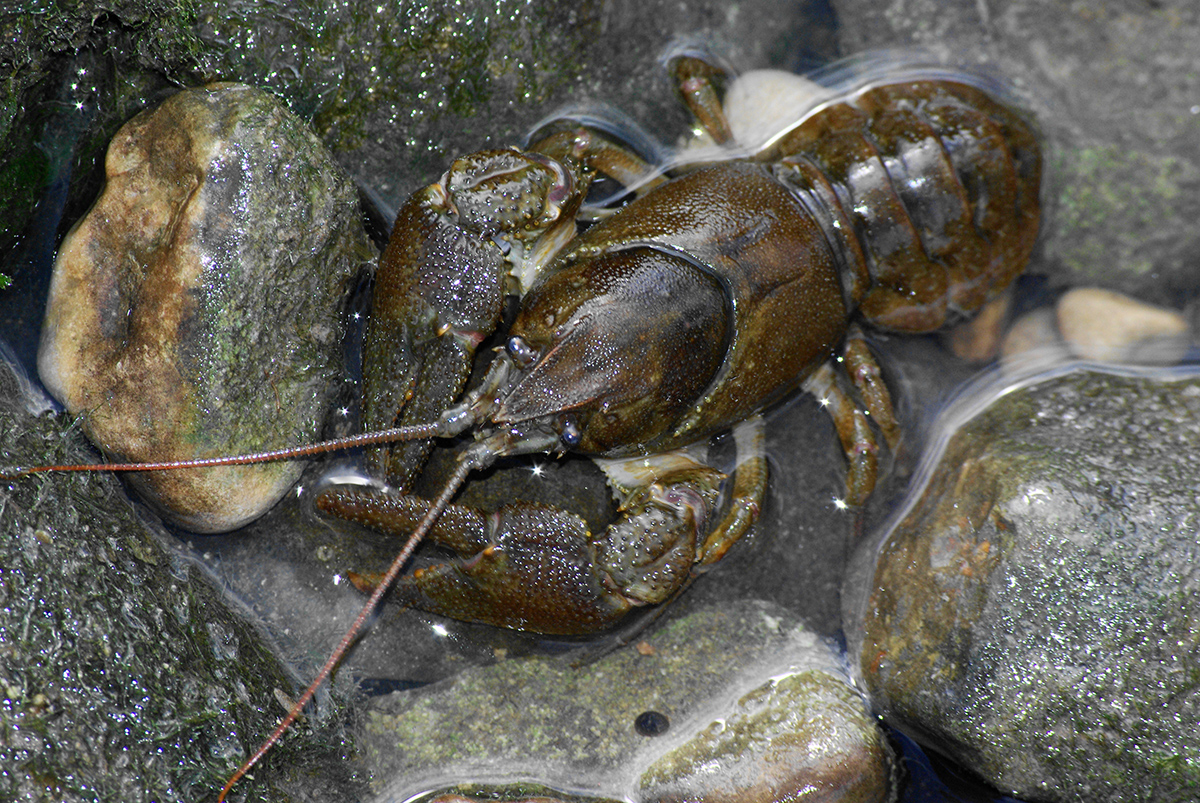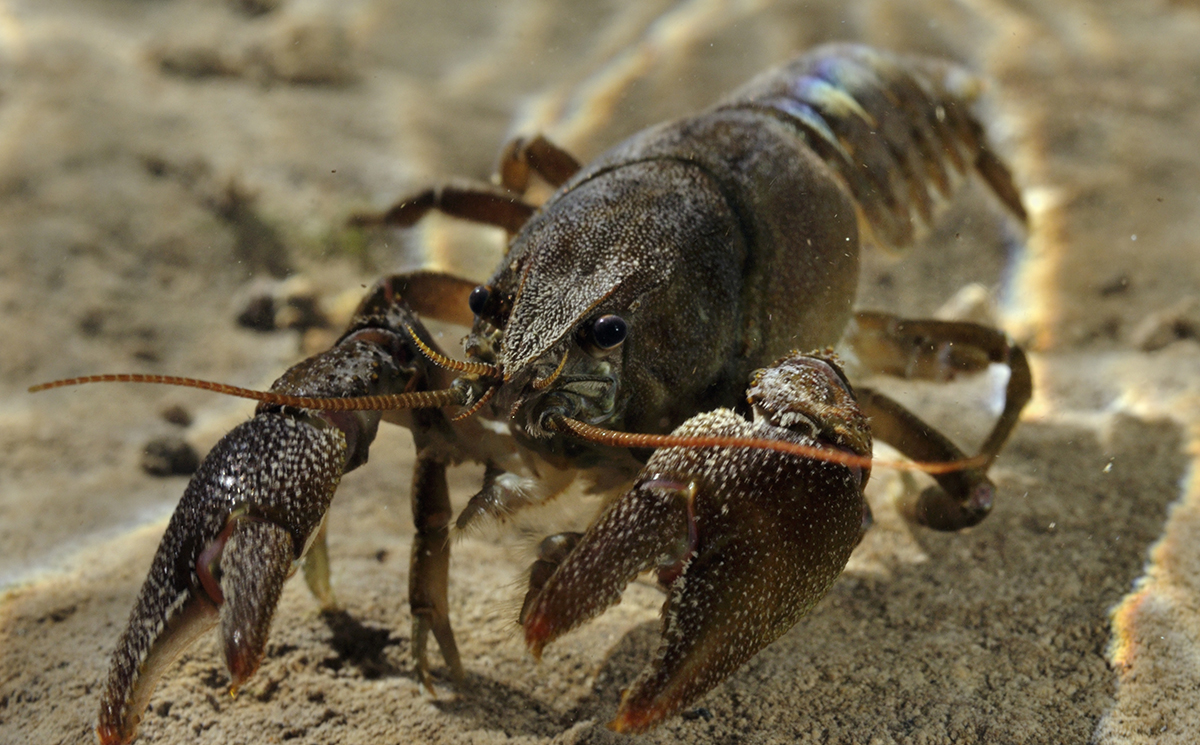White-clawed crayfish
The white-clawed crayfish is the UK’s only native crayfish species and remains one of the Eden’s more secretive inhabitants. During the day it hides under rocks or large tree roots projecting into the water and comes out at night to feed.
It is an omnivore and feeds on plants, carcasses and small creatures such as larvae, small fish and other invertebrates.
From above it has a brown or olive body but its underside is a pale pinkish-white colour, hence its name. It is a crustacean, like a crab or a lobster, and needs to live in water that is rich in minerals so that it can grow and strengthen its body armour, called the exoskeleton. As the crayfish grows it needs to shed its shell; this happens several times in its first year, and then annually. During this moulting period, before its new shell has hardened, the crayfish is particularly vulnerable to predators.
The white-clawed crayfish is a natural part of the diet of other predators, including otters, large fish and herons.
Mothers carry their eggs for nine months. When they hatch, they hitch a ride on their mother’s back for a few weeks to keep safe.
How you can help
The Eden catchment is one of the last strongholds for White-clawed crayfish in England.
However, there are two main threats to their survival.
- They are very sensitive to water pollution and only live in clean water, and
- The North American signal crayfish, an invasive species of crayfish which can be identified by a distinctive white or pale green-blue patch at the hinges of its claws. Not only is it bigger and stronger than the native species, it also competes for their food and will eat the White-clawed variety. They also carry a disease, crayfish plague, that is deadly to white-clawed crayfish.
You can help our precious White-clawed crayfish to survive and thrive in the Eden:
- Don’t pour chemicals or oils down your sink
- Only flush the 3 Ps – pee, poo and (toilet) paper down your loo
- They are a protected species, please do not disturb their habitats or move them to a different part of the river.
We carry out White-clawed crayfish monitoring every summer with volunteers to measure the population in the Eden. If you’d like to get involved, look out for details of training sessions on our website in spring/summer.

